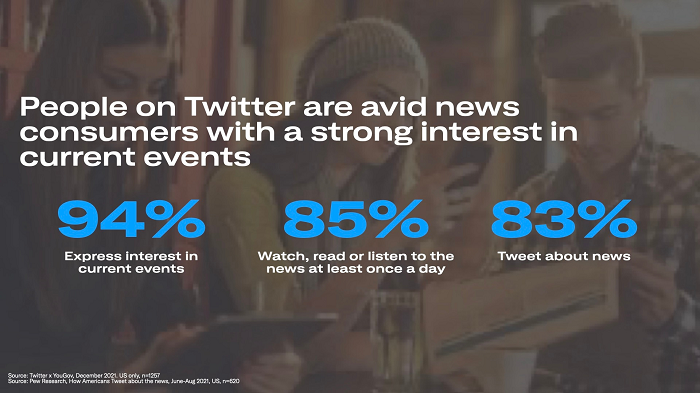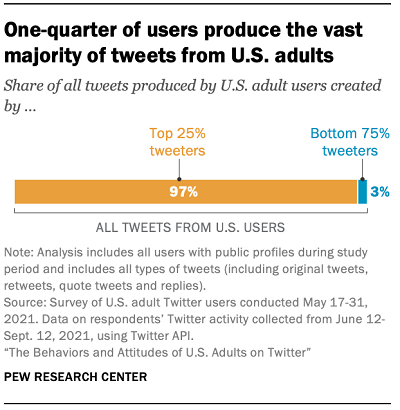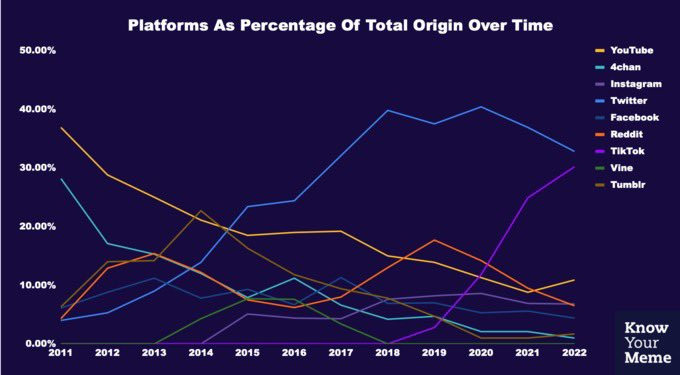You know what really grinds Twitter’s gears? The fact that its cultural influence extends far beyond its 238 million total mDAU, a figure that puts it well behind most other social apps in terms of direct usage.
For years, Twitter has been trying to re-frame the discussion around user counts, arguing that tweets are actually seen and read by a lot more people than this. It just can’t track them – though it has tried, with graphic depictions like this, in which Twitter suggests that hundreds of millions more people see tweets, even if they don’t actually log in to do it.

The hope for Twitter was that explanations like this would help to re-frame the perceived value of the app, and show the market, and potential ad partners, that there is real exposure value in tweets – even if it’s not on the scale of Facebook, which it will always be matched-up against.
That hasn’t worked. Twitter is still seen as an underachiever, based on its user count, and many of its more recent struggles with bots, adult content, etc., can all be linked back to its overarching need to keep that number high, no matter what.
I mean, testing 0.0038% of your users each month, then using that as your bot count? It’s pretty clear that Twitter’s not overly interested in really cracking down on bot traffic.
But still, Twitter continues to try and showcase its expanded value, with the platform today publishing a new overview of how many people rely on tweets for news content.
According to data from Twitter, Pew Research, Sparkler and YouGov, Twitter says that
- 85% of people on Twitter watch, read, or listen to the news at least once a day
- 83% of people on Twitter Tweet about news
- 55% of people on Twitter get their news from Twitter, more than other social media platforms
- More than 80% of young journalists rely on Twitter for their jobs
- 62% of Twitter news consumers say “Twitter helps me find new news outlets to follow”

I’m not sure about the second stat, that 83% of Twitter users tweet about news. Previous studies have shown that around 25% of Twitter users in the US produce 97% of all tweets.

That would suggest that most people are not tweeting much, if at all – but even so, the numbers do underline the role that Twitter plays in news dissemination and engagement, which could point to the broader reach of the platform as an aggregator for other sites, with so many journalists, in particular, reliant on Twitter to stay informed.
Which means that Twitter is highly influential, even if it doesn’t see the same levels of usage as other apps. If you want to get your stories out there, Twitter should be a key focus – because the people who use Twitter are highly engaged in their topics of interest, and they’ll take those stories and share them to other platforms, if they’re valuable/relevant.
The same concept is also highlighted in this graph from r/dataisbeautiful.

As you can see here, Twitter is a key source of web trends, which are then shared across every other platform and app. That’s why Twitter users often feel like they’re ahead of the game. Because often, they are, and in this context, it’s important to note the role that Twitter plays in providing the main platform for many key trends.
In other words, Twitter is more valuable than many think, and more than raw user numbers accurately represent.
Maybe that’s why Elon Musk was keen to buy it (at one stage), and maybe, under new management, there is a way for Twitter to better harness this value, both for its own benefit and in terms of improving the overall news and information ecosystem.
Either way, it’s interesting to note the oversized role that Twitter does play, even if it’s also beholden to market expectations in maintaining user counts, however it can.
Even to the detriment of the service.



